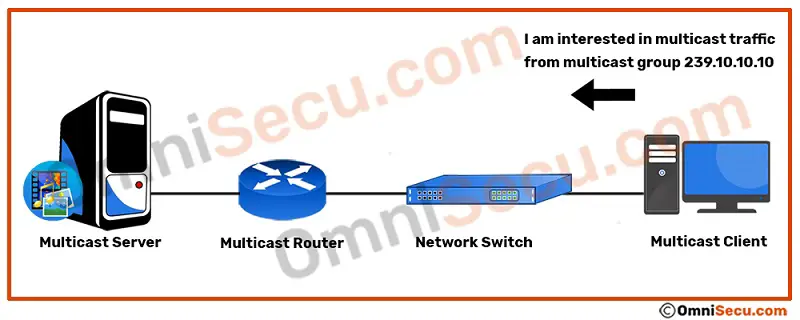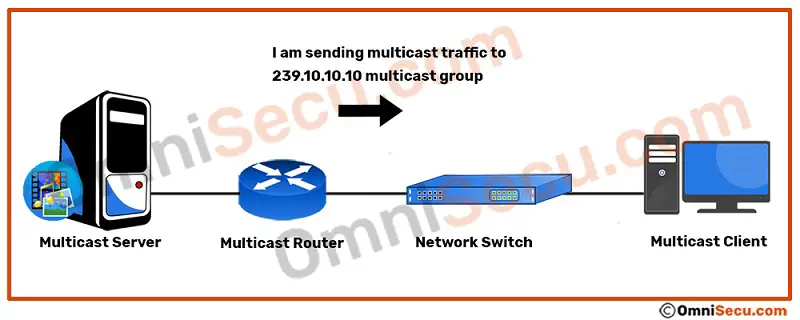What is multicast group
Multicast is a type of network communication which is based on the concept of multicast groups. A multicast group is a group of computers (more specifically, network interfaces) interested in receiving a particular stream of data. Multicast groups does not require to be located in a local network segment. Multicast groups can be located in any different network segments connected together with routers those can forward multicast traffic. Computers can join a multicast group or leave a multicast group using a protocol called as IGMP (Internet Group Management Protocol). IGMP (Internet Group Management Protocol) is an integral part of TCP/IP protocol suite.
A multicast Class D address is used as the destination address of IPv4 multicast datagrams. So, the key point to note is that in IPv4, multicast Class D addresses identify a multicast group. A computer which is interested and request datagrams sent to a multicast address becomes part of the multicast group represented by that multicast address. A multicast group can have minimum one to maximum unlimited number of computers as its members.
To understand the concept more clearly, refer below images. First image shows a computer in a network segment send IGMP (Internet Group Management Protocol) membership report message to join a multicast group (in this example; multicast group 239.10.10.10) to local router. Once the local router receieves the request to join a multicast group, the local router connects, receives and forwards multicast traffic addressed to multicast group 239.10.10.10 to the computer. Please note that for simplicity, only one client computer is shown in below images.


Multicast group memberships are dynamic, means that any computer can join or leave a multicast group at any time. A computer (more specifically, network interface) can become member of many multicast groups.
If you capture and open a multicast IPv4 datagram packet, the source IPv4 address will be the IPv4 address of the multicast server sending the packet and destination IPv4 address will be the Class D multicast address (or multicast group address).